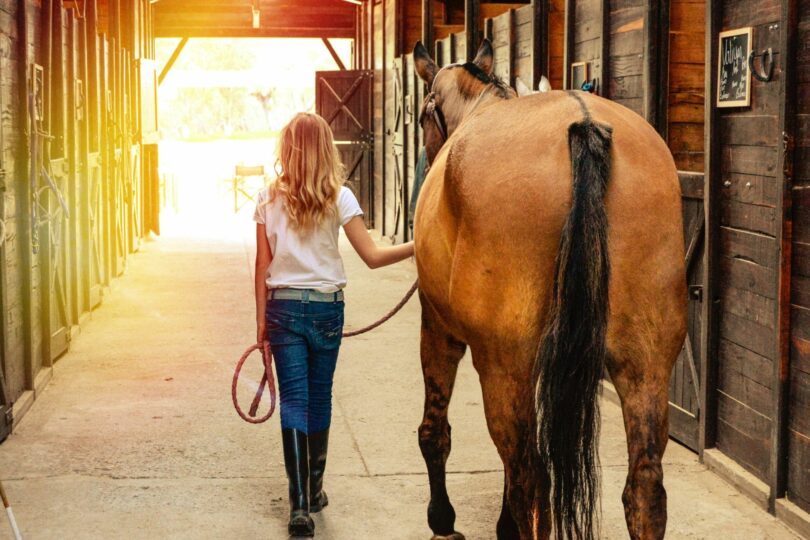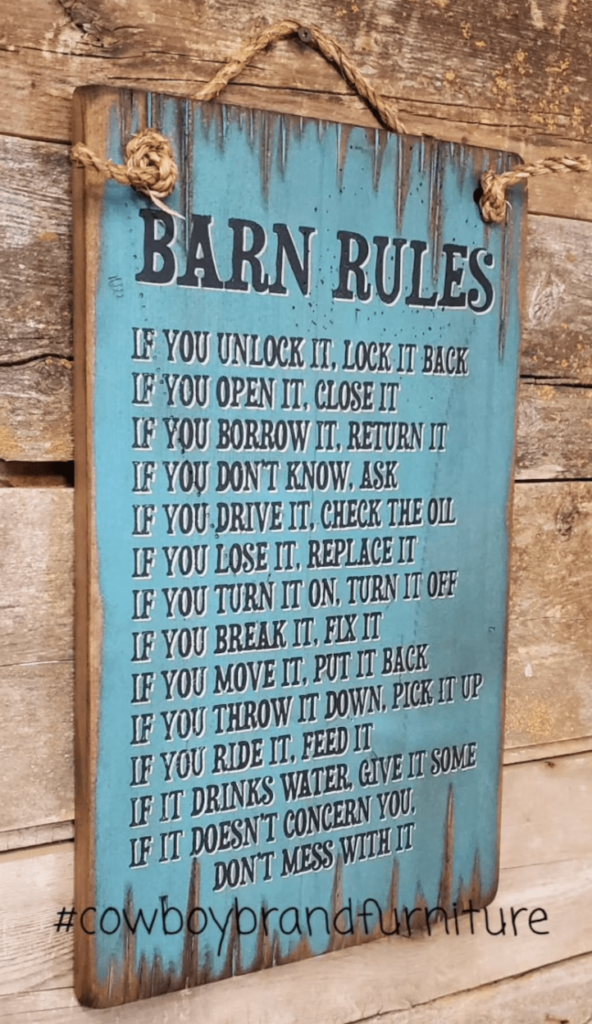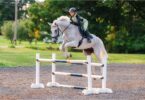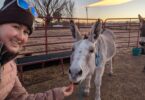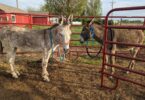How to keep yourself and others safe
The hardest part of starting a new hobby is the beginning. We’ve all been there–the awkward period when you’re just starting to learn the basics can be nerve-wracking! Luckily, there are a ton of excellent resources available to help new equestrians learn to stay safe as much as possible before even stepping foot in a barn.
Whether you’ve already found your ideal riding stable, or you’re evaluating options, always make a point to find out specific barn rules early on! While most barns will adhere to the general principles outlined below, each could have their own unique twists. Read on to help avoid any unsafe scenarios or awkward faux pas.
Common Barn Rules
Many horse stables will post their barn rules’ in a conspicuous area. While these may differ from barn to barn, basic principles should remain constant.
Don’t hesitate to ask—better to be up front and avoid any missteps!
Another format for barn rules is on a release form. Many horseback riding establishments will have a legal form for new riders to sign, releasing the farm from liability. You’ll get a copy, and the barn will keep the copy you signed. View this process as more than just liability coverage.
Rules exist to make sure everyone – from the rider, trainer, groom, to horse – is able to stay safe and enjoy their time while on the property.
Some barns even create videos to help everyone understand the rules:
What are some of the most common rules that a horse stable will have posted?
Here’s a list of some of the most common barn rules you could encounter:
- No running (remember, quick movements can spook horses)
- No shouting / loud noises (also causes spooking)
- No smoking (did you know hay and sawdust, commonly found in barns, is quite flammable?)
- If you open it, close it–especially gates and stall doors!
- Closed-toe footwear required (no one wants to get stepped on in flip flops!)
- Helmets required when mounted
- No outside dogs allowed (this is fairly typical–dogs can be a liability)
- Never feed a horse anything without permission
Understanding the Basics of Horse Behavior
Learning the basics of equine behavior is key to staying safe around horses. Horses are prey animals–if they get into a scary situation, their first instinct is to flee. If that isn’t an option, they may choose to fight.
Always be on the lookout for something that could spook a horse and be sure you are positioned accordingly.
You want to give yourself and the horse an out, at all times. 99.9% of the time a horse isn’t going to intentionally injure you–most injuries around horses are the result of being in the wrong place at the wrong time.
How does a horse’s conformation affect behavior?
The way a horse is built helps understand why they behave the way they do. Equine eyes are located on the sides of their heads, giving them excellent peripheral vision.
As a result, this means they can’t see directly in front of them, or behind them.
Additionally, horses are prey animals with a strong “flight” response. These two factors combined make horses easily startled by things they cannot see. Never sneak up on a horse–use your voice to make your presence known, and approach from the side, where you are in clear view.
How does fight-or-flight apply to horses?
Horses will always choose to flee before fighting. The only time they’ll stand their ground and fight is when fleeing isn’t going to work, such as if they are trapped in a confined space (like a trailer or a stall) or if a foal is involved.
A Solid Foundation: Working with Horses on the Ground
Groundwork is an important step in building a relationship with a horse. If you have the opportunity, do as much as you can with your horse on the ground before riding. This may include grooming, tacking up, and longing.
Learning to read each other’s body language on the ground will only benefit you in the saddle.
To communicate effectively as a team, you’ll need to earn each other’s trust. This involves interacting in a variety of scenarios, not just while riding.
What rules apply to being around horses on the ground?
Be sure to get the horse’s attention before approaching or touching. Remember how horses can’t see directly behind or in front of themselves?
- Approach from the side (but closer to the head than the tail!). Above all, be calm and quiet to let them know you’re not a threat.
- Never, ever, lose your temper with a horse.
- Lead a horse from the left side, standing about at the horse’s jaw. Never wrap the lead rope around your hand–loop it instead.
- If you’re feeding a horse a treat (only with permission) hold your hand flat. Fingers can look and feel an awful lot like carrots!
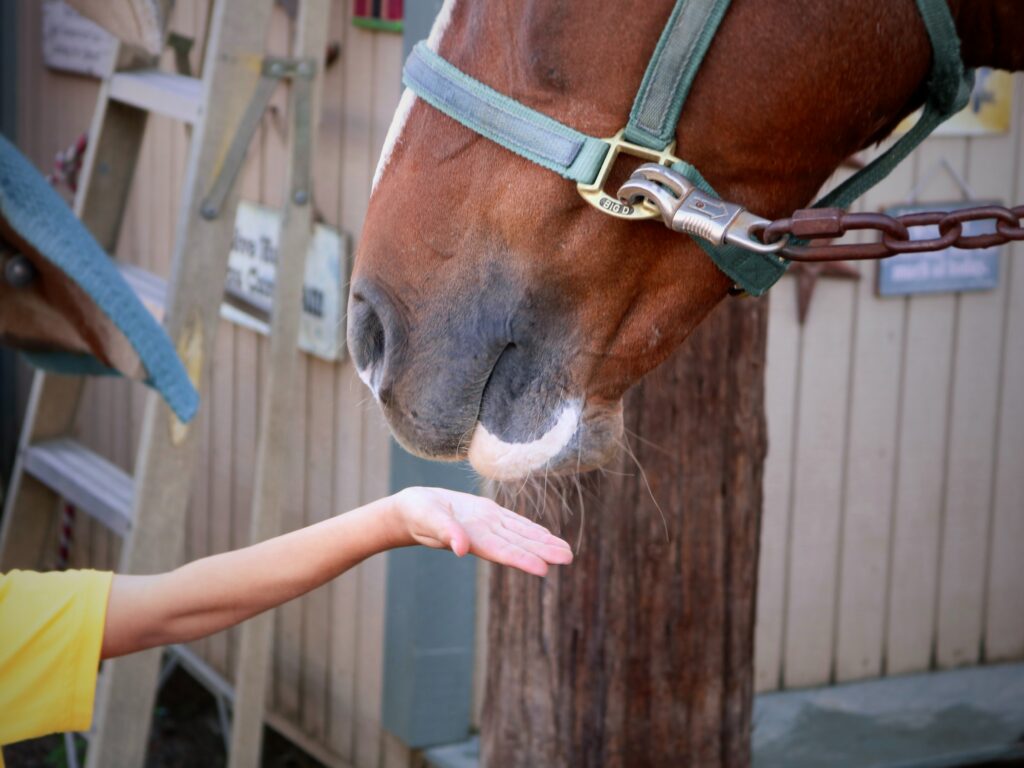
Horse Safety Starts with the Right Equipment
Your horse doesn’t care what brands you wear to the barn. The important thing is having the correct attire. This includes pants, boots with a heel and hard sole, and a riding helmet.
What should you wear to the barn?
Footwear is one of the most important things you can wear to protect yourself at the barn. Horses are large animals. At some point, you will probably get stepped on. Wearing boots with a closed toe will help protect your foot from pinching/crushing injuries.
A heel is also critical–a boot heel will keep your foot from sliding through the stirrup.
Why is this important? Without a heel, your foot can get stuck in the stirrup, which can end quite badly. A hard sole will protect your foot from stepping on any sharp objects you could encounter, such as nails or wood splinters.
Long pants are also essential. Even if you’re not riding, where horses are, biting flies probably are, too. If you’re riding Western, chafing is something to be concerned about. Pants generally protect you from this.
English riders can add pinching to the list–stirrup leathers can be uncomfortable, especially on bare legs (There’s a reason we wear tall boots!)
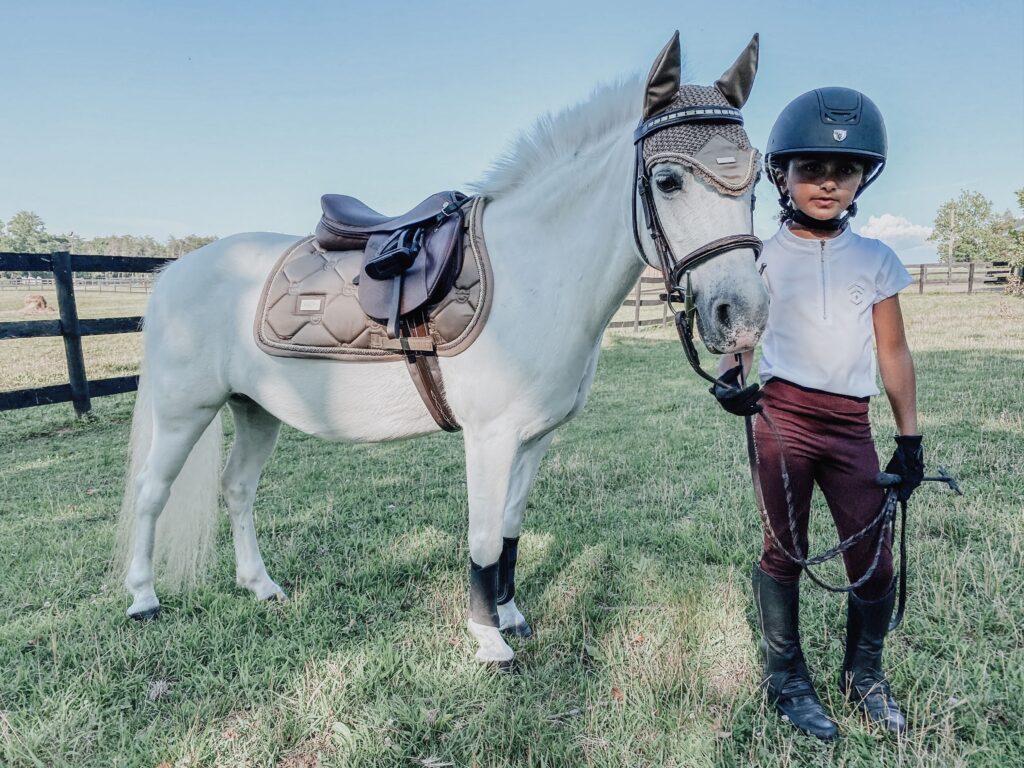
Credit: The Posh Equestrian
Some people ride in leggings, and others prefer jeans. Wear what you are comfortable in!
Here are some of our favorite pant options:
Loose clothing is not advised. It can become caught on things, or curious horses may nip at baggy clothing.
Are helmets necessary?
Helmets are required at many barns, and it’s easy to understand why.
You only get one brain–better to protect it!
Horseback riding helmets are not the same as bike helmets–each helmet is designed specifically for its application, and these don’t translate from one sport to another.
The Next Step: Safety in the Saddle
You’ve got the basics of behavior and groundwork down. Now, it’s time to jump into the saddle.
What rules apply to being around horses in the saddle?
When mounting, it can be helpful to have someone hold the horse’s head, especially if you’re just starting out. Some horses will start walking the second you start mounting. This can be scary to a new rider.
Once you’re in the saddle, be aware of your surroundings. Horses are social and will try to stick together. Try to keep at least one horse length between you and the horse in front of you. If you’re riding in traffic and need more space, pass (always to the inside!) or circle to give yourself more room.
What etiquette should a new rider be aware of when riding in a group?
If you’re entering an arena, be sure to wait and find an opening so you don’t disrupt horses already working. Before opening a gate to enter, alert others to your presence so they can prep their horses for your entrance.
Remember not to stop on the outside track of the arena. If you need to stop, you should guide your horse to the middle of the arena, where it is safer and less inconvenient to maneuver around a stationary object.
Watch out for red ribbons–if you see a red ribbon in a horse’s tail, it’s a sure sign that they like their personal space and will kick if that space isn’t respected.
Frequently Asked Questions
Q: What are some common barn safety rules for horse stables?
There are more obvious rules that involve safety, like no running or loud noises.
But just as important as these are rules like shutting stall doors and gates. If you turn it on, turn it off. Open it, shut it. Respect barn hours. No smoking or open flames. If you, or your horse, make a mess, clean it up.
Q: What is the best footwear for a riding lesson?
There are so many good options to choose from! If you’re starting out riding English, a paddock boot may be a good choice. Western riders have many boot options to choose from. Boots are available at about every possible price point.
Q: Can I wear a bike helmet to a riding lesson?
No! This is because riding helmets and bike helmets protect different parts of the head. A riding helmet is built to sustain a fall from a greater distance and force than a bike helmet. Some excellent riding helmets can be found on Amazon, like these:
- Troxel Sport Horseback Riding Helmet
- Miscasa Toddler Horse Riding Helmet
- Ovation Deluxe Schooler Equestrian Helmet
Q: What are common things a horse may spook at?
Anything and everything. Horses may see something out of their right eye and be fine with it, but when you reverse direction and they see it out of their left eye, it is now terrifying.
Some horses don’t spook at all–we love those horses and refer to them as “Bomb proof.”
Other horses only spook at new things, but don’t be surprised if your horse spooks at every-day items they’ve seen 1,000 times before. It’s important to maintain awareness of not only your horse but your surroundings.
When you’re on a horse, think like a prey animal. Always be prepared and try to anticipate your horse’s behavior.
Q: What are the most common injuries when working with horses?
The most common injury is being bitten or stepped on.
Q: What are some beginner rules that you can break once you become an expert?
You know that saying, “Rules are meant to be broken”? That doesn’t apply to horses. Horses are large animals, and while they may not mean to hurt you, it’s always a possibility. Because of that, no one should ever break a safety rule around them.
Parting Thoughts
Barn rules exist to help us all enjoy barn life safely–similar to driving laws. These rules help us create and teach basic etiquette while providing a fun space for everyone to enjoy. Horses are large animals and can be unpredictable. Understanding how their brains work, combined with their individual personality quirks, will help you stay safe around horses.
P.S. Enjoy this article? Trot on over to:
- 10 Best Horse Riding Helmets (Dressage, Jumping, etc.)
- Tot to Trot: 5 Best Riding Helmets for Toddlers
- 8 Best Horse Riding Helmets for Hot Weather Relief
- Horseback Riding Safety Equipment That’s Worth Every Penny
- Why Western Riders Don’t Wear Helmets
- Horseback Riding: What to Wear (With Pictures)
- Hit-Air Vest Review: My Favorite Fall in 30 Yrs.

